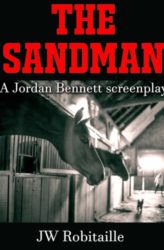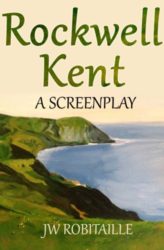Screenplays
I began writing screenplays in order to improve the dialogue in my fiction and to focus on action and plot rather than voice. I had been told that my fiction was too intellectual, too much in the mind and that I should concentrate on telling a story. Writing a screenplay guaranteed that I had to stay out of the mind. Everything had to be told through action and dialogue. I learned to write a screenplay by reading Syd Field’s book Screenplay, still the most straightforward and best introduction to the genre out there. Nothing will help a fiction writer hone dialogue more than writing a screenplay. You have to imagine people saying your lines to each other, something too few writers do when they write fiction.
Reading a screenplay is very different from reading fiction. It requires more imagination on the reader’s part. I remember reading my first screenplay and thinking there wasn’t much to it— just dialogue with no explanation of how the characters feel and no description of scene. Writers of screenplays are cautioned not to do too much of the director’s work for him or her, not to describe the scene in any detail. So when you read the screenplay you have to be willing to imagine the scene and visualize the interactions.
The screenplays will be available soon.
Jordan Bennett

Gainesville Police Department investigator Jordan Bennett tackles tough crimes.
In The Secret Heart, Bennett investigates a missing woman only to discover her secret life of relationships with men in online chat rooms. With the aid of her attractive assistant, Abby, he tracks her cyber footprint. His investigation leads him to a man who calls himself Dark Knight to Atlanta where he reconnect with an old college girlfriend.
In The Sandman Bennett investigates the killing of a horse by Tommy Burns, AKA the Sandman, named for his reputation for putting horses to sleep. The investigation that follows uncovers and insurance fraud scandal that rocks the horse industry and leads to the murder of the Brock candy Heiress. The case throws him together with an attractive FBI agent and catapults him into the realm of big publicity and big ambition.
Holly Prentiss

Holly Prentiss is a struggling L.A. screenwriter married to a successful director.
In California Idyll she accompanies her mother on a trip to northern California where on impulse she buys a ramshackle house on the coast. As Holly renovates the house she discovers the joys of a simpler life, begins to paint, and flirts with a relationship with one of the workmen restoring the house. Her idyll is interrupted by a visit from her husband and her agent, both of whom threaten the fragile world she has built for herself.
In Becoming Vincent Holly returns to her house on the coast to make repairs and begins a cycle of paintings inspired by her exploration of the life of Vincent Van Gogh. The further Holly delves into Van Gogh’s life, the more she feels they are kindred spirits. Will her exploration lead to greater creativity or will it lead to madness?
Rockwell Kent

Rockwell Kent (1882-1971) was an American painter, writer, illustrator, adventurer, and political activist whose passions involved him in the major artistic and political currents of the 20th century. A student of William Merritt Chase and Robert Henri, Kent was friends with John Sloan, George Bellows, Edward Hopper, and he helped organize the First and Second Exhibition of Independent Artists, shows that challenged the stranglehold of the Academy and championed an independent American Art. He was called the next Winslow Homer for his passionate depictions of Monhegan Island, where he first fell in love with the wild landscapes he was to pursue and paint throughout his life. His story is set against some of the most spectacular scenery in the world—Monhegan, Alaska, Newfoundland, Greenland—huge landscapes that inspired his art and his bestselling journals.